Linux has always been a haven for tech enthusiasts, developers, and creative professionals. Its versatility and open-source nature make it a popular choice for both personal and professional use. However, to get the best out of your Linux system, you need the right set of applications.
As we embrace 2025, this guide highlights the top 10 must-have Linux applications that will supercharge your productivity, creativity, and enjoyment. From coding to cloud storage, these handpicked tools cater to a diverse range of needs and are poised to make your Linux journey unforgettable.
Top 10 Must Have Linux Applications for 2025
1. VS Code
Exploring Linux Applications: Visual Studio Code (VS Code)
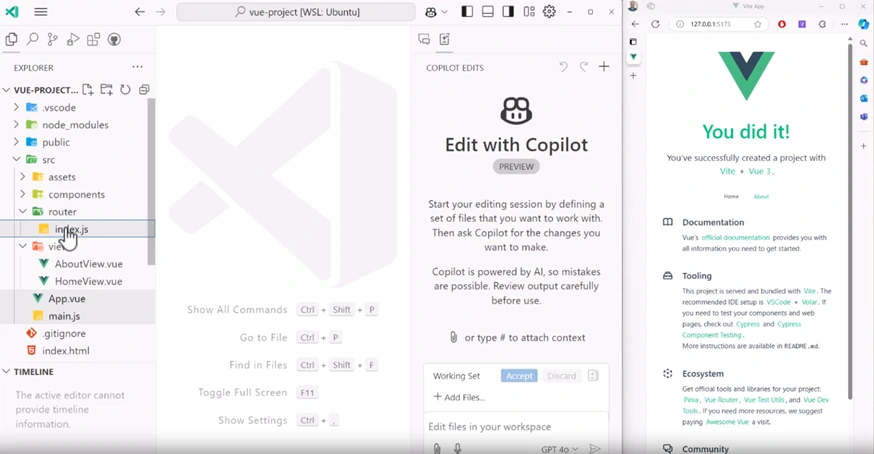
Linux, known for its robustness and flexibility, is a preferred operating system for developers and power users. Among the plethora of tools available for Linux, Visual Studio Code (VS Code) has emerged as a go-to application for coding, scripting, and more. In this article, we delve into the features, benefits, and reasons why VS Code stands out among Linux applications.
What is Visual Studio Code?
VS Code is a free, open-source code editor developed by Microsoft. Despite its origins at Microsoft, it has gained immense popularity in the Linux community due to its lightweight nature and extensive features. Designed for developers of all skill levels, it supports multiple programming languages and provides a seamless coding experience.
Key Features of VS Code on Linux
- Cross-Platform Compatibility
VS Code is available for Linux, Windows, and macOS. Its cross-platform nature ensures developers can switch between systems without losing productivity.
- Extensive Language Support
With built-in support for languages like Python, JavaScript, C++, and more, VS Code caters to a wide range of developers. The marketplace offers additional extensions for less commonly used languages.
- Customizability
VS Code’s flexibility allows users to tailor their environment through themes, keyboard shortcuts, and settings. Developers can make it their own, optimizing it for their workflow.
- Integrated Terminal
Linux users appreciate the integrated terminal, which allows direct access to the command line within the editor. This feature streamlines tasks like running scripts and managing files.
- Git Integration
For version control, VS Code comes with built-in Git support, making it easier to manage repositories, handle merges, and track changes.
- Rich Extension Marketplace
The VS Code Marketplace offers a vast array of extensions, from linters and debuggers to themes and productivity tools. Developers can enhance the editor’s functionality to meet their specific needs.
Why Use VS Code on Linux?
- Performance
Linux’s lightweight and efficient architecture pairs well with VS Code, which is known for its speed and low resource consumption.
- Community Support
The open-source nature of both Linux and VS Code means an active community provides plugins, tutorials, and troubleshooting tips.
- Ease of Installation
Installing VS Code on Linux is straightforward, with packages available for most popular distributions, including Ubuntu, Fedora, and Arch Linux.
- Seamless Debugging
VS Code’s built-in debugging tools are particularly useful for developers on Linux, where many debugging tasks are performed directly in the terminal. The graphical interface simplifies the process.
Installing VS Code on Linux
To install VS Code on Linux, follow these steps:
- Using Package Manager:
- On Debian-based systems (Ubuntu, Linux Mint):
sudo apt update
sudo apt install code
- On Fedora-based systems:
sudo dnf install code
- On Arch-based systems:
sudo pacman -S code
2. Using Snap:
sudo snap install code –classic
3. Manual Download:
Download the .deb or .rpm package from the official VS Code website and install it using your package manager.
Visual Studio Code has cemented its place as a must-have tool for developers on Linux. Its powerful features, customizability, and seamless integration with Linux systems make it an indispensable application. Whether you’re a seasoned programmer or just starting, VS Code on Linux provides an environment where productivity and creativity thrive.
So, if you haven’t explored VS Code on Linux yet, now is the time to dive in and experience the power of this exceptional code editor.
2. GIMP
Exploring GIMP: A Powerful Linux Application for Image Editing
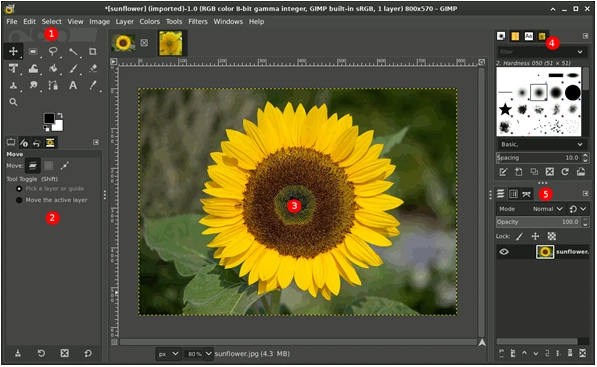
When it comes to image editing on Linux, GIMP (GNU Image Manipulation Program) stands tall as one of the most versatile and powerful tools available. Known for its open-source nature and extensive features, GIMP offers professional-grade image editing capabilities, rivaling proprietary alternatives like Adobe Photoshop. Whether you’re a graphic designer, photographer, or hobbyist, GIMP has something to offer for everyone.
What is GIMP?
GIMP is a free and open-source raster graphics editor that allows users to edit photos, create artwork, and design graphics. It was first released in 1996 and has since become a staple for Linux users, although it is also available for Windows and macOS. Its community-driven development ensures continuous improvements and feature updates.
Key Features of GIMP
- Customizable Interface:
GIMP’s interface is highly customizable, allowing users to adapt it to their workflow. The modular design enables users to rearrange toolboxes, dialogs, and panels according to their preferences.
- Advanced Editing Tools:
From basic cropping and resizing to advanced retouching, GIMP provides a wide range of editing tools. Features like layer masks, paths, and selections enable precise control over image editing.
- Support for Multiple File Formats:
GIMP supports a variety of file formats, including popular ones like JPEG, PNG, TIFF, and PSD (Photoshop). It also allows exporting in web-optimized formats, making it ideal for digital content creators.
- Powerful Plugins and Extensions:
The application supports an extensive library of plugins and scripts, extending its functionality further. From artistic effects to automation tools, the GIMP Plugin Registry has options for every need.
- Non-Destructive Editing:
GIMP’s layer system enables non-destructive editing, where changes can be made without altering the original image. This feature is invaluable for professional workflows.
- Color Management:
With ICC color profile support, GIMP ensures accurate color representation, which is crucial for tasks like photo editing and digital painting.
GIMP for Professional Use
While GIMP is free, it doesn’t compromise on quality. Many professionals in the fields of graphic design, web development, and photography rely on GIMP for their projects. Its robust features and extensibility make it a viable alternative to expensive proprietary software. Additionally, GIMP’s active community provides tutorials, tips, and resources, making it easier for beginners to master.
GIMP vs. Photoshop
The comparison between GIMP and Photoshop often arises in discussions about image editing software. While Photoshop boasts a broader range of features and industry-standard status, GIMP’s open-source nature and cost-free availability make it an excellent choice for Linux users and budget-conscious individuals. The steep learning curve of Photoshop also makes GIMP more accessible for casual users.
How to Install GIMP on Linux
Installing GIMP on Linux is straightforward. Most distributions include GIMP in their software repositories, so it can be installed using the package manager. For example:
- Ubuntu/Debian:
sudo apt update
sudo apt install gimp
- Fedora:
sudo dnf install gimp
- Arch Linux:
sudo pacman -S gimp
Alternatively, you can download the Flatpak version for a more up-to-date experience:
flatpak install flathub org.gimp.GIMP
GIMP is a testament to the power of open-source software. It proves that you don’t need expensive tools to create stunning visuals or edit photos professionally. Its extensive feature set, active community, and compatibility with Linux make it a must-have application for anyone in need of a reliable image editor. Whether you’re a seasoned designer or a beginner exploring graphic design, GIMP is worth a try. Embrace the freedom of open-source and unlock your creative potential with GIMP!
3. LibreOffice
LibreOffice: The Ultimate Office Suite for Linux Users
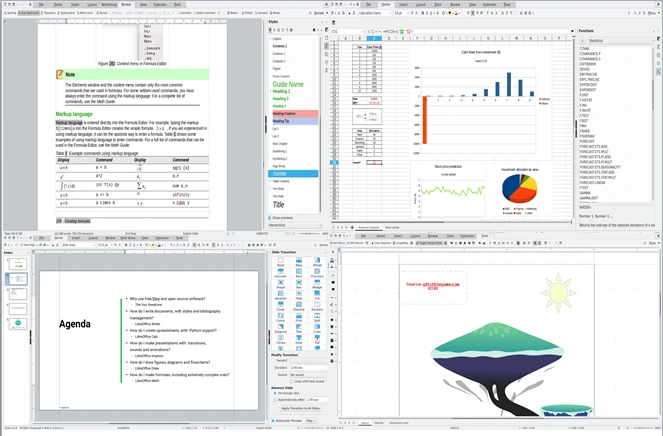
LibreOffice stands out as one of the most powerful and versatile office productivity suites available for Linux users. Developed by The Document Foundation, this open-source software package offers a compelling alternative to proprietary office suites, boasting a wide range of tools and features that cater to both personal and professional needs.
Key Features of LibreOffice
Cross-Platform Compatibility: LibreOffice is not limited to Linux; it is also available for Windows and macOS, making it an excellent choice for users who work across multiple operating systems. Its native support for OpenDocument Format (ODF) ensures seamless compatibility with other open-source applications.
Comprehensive Office Tools:
- Writer: A robust word processor that rivals Microsoft Word, Writer is ideal for creating documents, reports, and even eBooks.
- Calc: A powerful spreadsheet tool similar to Microsoft Excel, Calc excels in data analysis, visualization, and financial modeling.
- Impress: A feature-rich presentation application, Impress allows users to create stunning slideshows with ease.
- Draw: Perfect for vector graphics and diagram creation, Draw is a versatile tool for designing professional visuals.
- Base: A database management system that integrates seamlessly with other office tools, making it perfect for managing data-driven projects.
- Math: A formula editor designed for creating and editing mathematical equations.
User-Friendly Interface: LibreOffice offers a clean and intuitive interface, ensuring that new users can quickly adapt while experienced users can maximize productivity. It also supports various interface styles, including a traditional menu and toolbar layout or a more modern ribbon-like design.
Extensive File Format Support: LibreOffice can open and save files in a wide range of formats, including Microsoft Office formats (DOCX, XLSX, PPTX), PDF, and more. This ensures compatibility with colleagues and clients using other office suites.
Customization and Extensions: Users can enhance LibreOffice’s functionality with a vast library of extensions and templates, allowing them to tailor the suite to their specific needs.
Regular Updates and Community Support: Being an open-source project, LibreOffice benefits from continuous updates and improvements driven by a global community of developers and contributors. The active community also provides extensive documentation, forums, and support channels for troubleshooting and learning.
Why Choose LibreOffice for Linux?
Linux users often prefer LibreOffice because it aligns perfectly with the principles of open-source software: freedom, transparency, and community-driven development. Unlike proprietary suites, LibreOffice does not lock users into expensive licenses or subscriptions. Instead, it empowers them with a free and fully-featured solution that respects their privacy and freedom.
Moreover, LibreOffice is included in the repositories of most Linux distributions, making installation straightforward. For instance, Ubuntu users can install LibreOffice with a simple command like sudo apt install libreoffice, while Fedora users can use sudo dnf install libreoffice.
Use Cases in the Real World
LibreOffice has been widely adopted across various sectors:
- Education: Schools and universities use LibreOffice to reduce costs and promote the use of open-source tools among students.
- Government: Several governments worldwide have adopted LibreOffice to achieve vendor independence and improve data sovereignty.
- Small Businesses: Entrepreneurs and startups benefit from LibreOffice’s robust features without incurring additional expenses.
How to install LibreOffice
1. Using the Package Manager
Most Linux distributions include LibreOffice in their default repositories.
For Debian/Ubuntu-based distros:
sudo apt update
sudo apt install libreoffice
For Fedora-based distros:
sudo dnf install libreoffice
For Arch Linux:
sudo pacman -S libreoffice-fresh
2. Download the Latest Version (Manual Installation)
If you want the latest version directly from LibreOffice:
- Go to the official LibreOffice website.
- Download the .deb (for Debian/Ubuntu) or .rpm (for Fedora/openSUSE) package.
- Extract the downloaded file:
tar -xvf LibreOffice*.tar.gz
Install the packages:
For Debian/Ubuntu:
sudo dpkg -i LibreOffice*/DEBS/*.deb
For Fedora/openSUSE:
sudo rpm -ivh LibreOffice*/RPMS/*.rpm
3. Using Snap or Flatpak
Snap Package (Universal):
sudo snap install libreoffice
Flatpak (Universal):
Ensure Flatpak is installed on your system.
Install LibreOffice:
flatpak install flathub org.libreoffice.LibreOffice
Run LibreOffice:
flatpak run org.libreoffice.LibreOffice
LibreOffice is more than just an office suite; it’s a testament to the power of open-source collaboration. For Linux users seeking a reliable, feature-rich, and cost-effective solution, LibreOffice is the ideal choice. Whether you’re drafting a report, crunching numbers, or designing a presentation, LibreOffice equips you with the tools you need to succeed—all while championing the values of open-source software.
4. Krita
Krita: A Powerful Linux Application for Digital Artists
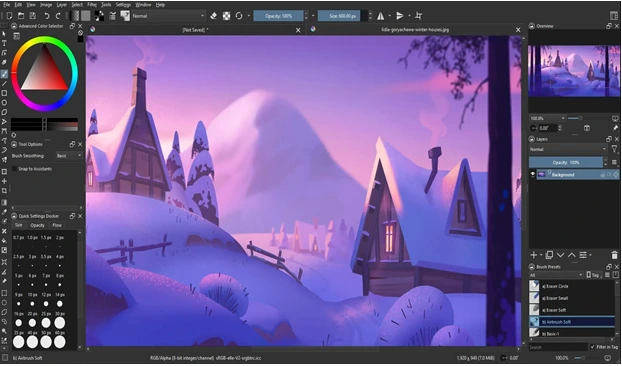
Krita is an exceptional open-source painting application that has earned its place as a favorite among digital artists and illustrators. Designed for creative professionals and hobbyists alike, Krita provides a rich set of tools to create stunning artwork, all while being free and available across multiple platforms, including Linux.
What is Krita?
Krita is a professional-grade digital painting software developed by the Krita Foundation. It was originally part of the KOffice suite, but over the years, it has evolved into a standalone application with a focus on 2D painting, concept art, and animation. Krita stands out for its user-friendly interface, customizable workspace, and robust feature set that rivals many paid applications.
Key Features of Krita
1. User-Friendly Interface
Krita’s interface is intuitive and highly customizable. Users can rearrange panels, create their own tool presets, and save layouts that best suit their workflow. The dark theme and uncluttered design allow artists to focus on their creativity.
2. Powerful Brush Engine
The brush engine in Krita is one of its standout features. With over 100 preloaded brushes and the ability to customize your own, Krita offers tools for every artistic style. The brush settings, including texture, opacity, and blending, can be fine-tuned to meet individual needs.
3. Advanced Color Management
Krita supports a wide range of color models, including RGB, CMYK, and LAB. It also includes HDR painting support and ICC color profiles, making it ideal for professional-grade projects.
4. Animation Tools
For animators, Krita provides a dedicated timeline and onion-skinning functionality. Artists can create frame-by-frame animations directly within the software, making it a versatile choice for 2D animators.
5. Extensive File Format Support
Krita supports a variety of file formats, including PSD, making it easy to collaborate with other software like Adobe Photoshop. Artists can also export their work in high-resolution formats for print and digital use.
6. Free and Open Source
As an open-source application, Krita is entirely free to use. The community-driven development ensures regular updates and new features, backed by an active community that provides tutorials and resources for beginners and experts alike.
Why Use Krita on Linux?
Linux users often face challenges finding high-quality creative software that runs natively on the platform. Krita fills this gap by offering a powerful tool that integrates seamlessly with Linux environments. Its lightweight performance and compatibility with various Linux distributions make it a perfect choice for artists who prefer open-source ecosystems.
Additionally, installing Krita on Linux is straightforward. It is available in most distribution repositories and can also be downloaded as an AppImage or Flatpak for universal compatibility.
Getting Started with Krita
To begin using Krita, visit its official website to download the latest version for your Linux distribution. Once installed, explore the numerous tutorials and documentation provided by the community to get up to speed with its features. The learning curve is gentle, making it accessible even for beginners.
Krita is a testament to the power of open-source software. It empowers artists with professional-grade tools without the burden of costly licenses. Whether you’re a seasoned illustrator, a digital painter, or someone just starting out, Krita on Linux is an excellent choice to bring your creative visions to life. Its blend of powerful features, ease of use, and community support makes it a must-have application for any digital artist.
5. Mozilla Firefox
Category: Web Browser
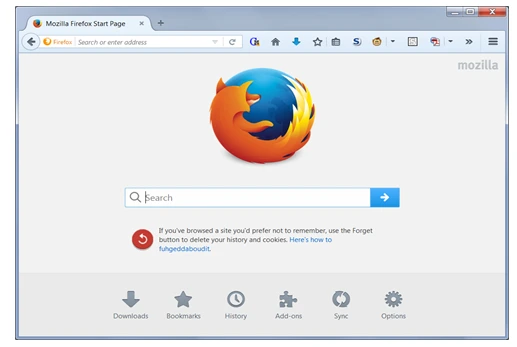
Why It’s Essential: Privacy and speed make Mozilla Firefox a standout choice among Linux users. Its open-source nature aligns perfectly with Linux principles, and its regular updates ensure top-notch performance and security.
Key Features:
- Extensive library of add-ons
- Enhanced tracking protection
- Sync across devices
Installation Command:
sudo apt install firefox
6. Audacity
Category: Audio Editor
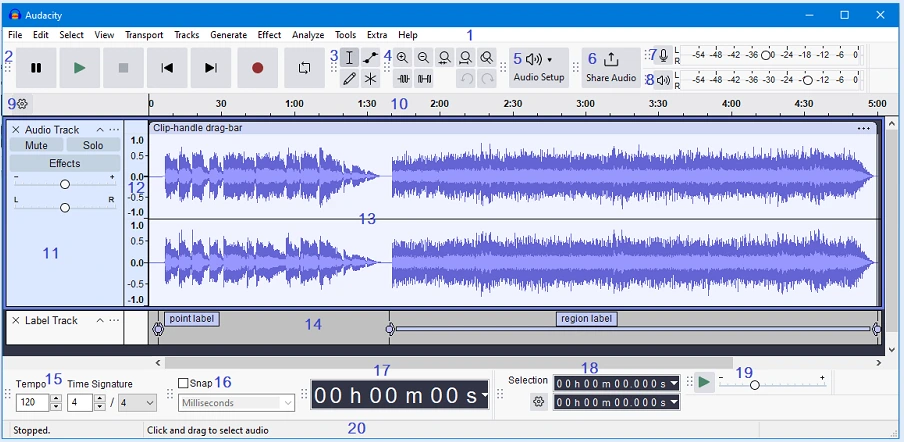
Why It’s Essential: Audacity is a versatile audio editing tool that caters to podcasters, musicians, and audio enthusiasts. It’s perfect for recording, editing, and mixing audio tracks.
Key Features:
- Multitrack editing
- Support for a wide range of audio formats
- Comprehensive library of effects
Installation Command:
sudo apt install audacity
7. VLC Media Player
Category: Media Player
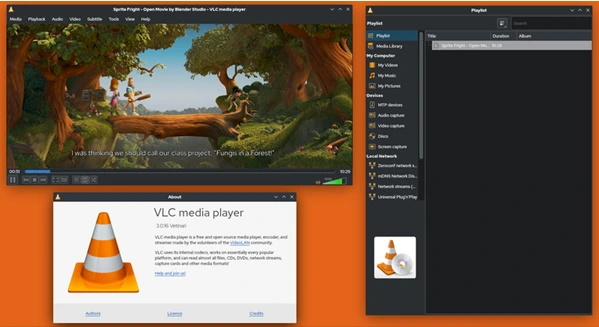
Why It’s Essential: VLC Media Player is the Swiss Army knife of media players. It can play almost any file format you throw at it, making it a must-have for media consumption on Linux.
Key Features:
- Wide codec support
- Stream media from online sources
- Customizable interface and plugins
Installation Command:
sudo apt install vlc
8. Nextcloud
Category: Cloud Storage
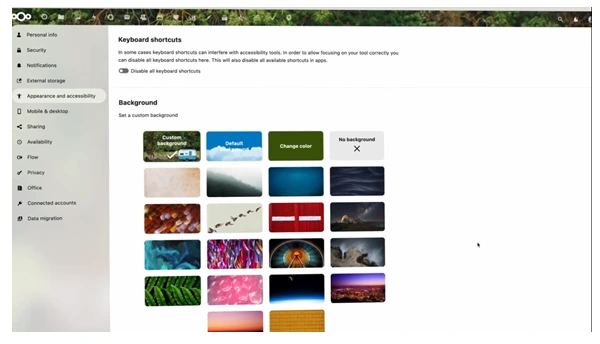
Why It’s Essential: Nextcloud empowers Linux users to set up their own cloud storage solution. It’s perfect for those who value privacy and want full control over their data.
Key Features:
- File synchronization across devices
- End-to-end encryption
- Calendar and contact management
Installation Command:
sudo apt install nextcloud-client
9. OBS Studio
Category: Streaming & Recording
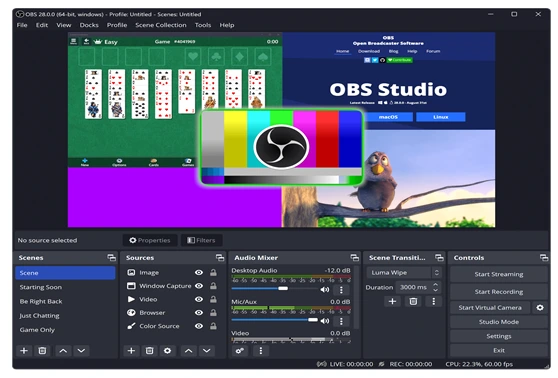
Why It’s Essential: Open Broadcaster Software (OBS) is a powerful tool for video streaming and screen recording. Whether you’re a content creator or a professional hosting webinars, OBS is the go-to choice.
Key Features:
- Real-time video/audio capturing
- Customizable layouts
- Support for multiple streaming platforms
Installation Command:
sudo apt install obs-studio
10. Thunderbird
Category: Email Client
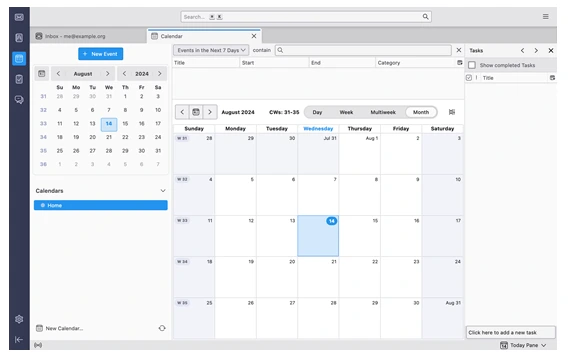
Why It’s Essential: Thunderbird is an open-source email client that supports multiple email accounts, calendaring, and task management. It’s a reliable choice for those who prefer managing their emails locally.
Key Features:
- Advanced email filtering
- Calendar integration
- End-to-end encryption support
Installation Command:
sudo apt install thunderbird
Final Thoughts
These 10 applications are just the tip of the iceberg when it comes to the vast software ecosystem available on Linux. Whether you’re a developer, artist, or casual user, these tools are designed to cater to a wide range of needs, making your Linux experience in 2025 both productive and enjoyable.
What are your favorite Linux applications? Share your recommendations in the comments below!
Also Read
Linux Vs. Windows: Which Operating System is Right for You?


